Accepted Papers
Recent catalogue
- Vol.73 No.15
2024-08-05
- Vol.73 No.14
2024-07-20
- Vol.73 No.13
2024-07-05
- Vol.73 No.12
2024-06-20
- All Archive

SPECIAL TOPIC—Precision spectroscopy of few-electron atoms and molecules
2024, 73 (15): 150201.
doi:10.7498/aps.73.20240554
Abstract +
In the precision spectroscopy of few-electron atoms, the generation of high-intensity metastable helium atoms and helium-like ions is crucial for implementing experimental studies as well as a critical factor for improving the signal-to-noise ratio of experimental measurements. With the rapid development of free-electron laser (FEL) and technology, FEL wavelengths extend from hard X-rays to soft X-rays and even vacuum ultraviolet bands. Meanwhile, laser pulses with ultra-fast, ultra-intense and high repetition frequencies are realized, thus making it possible for FEL to prepare single-quantum state atoms/ions with high efficiency. In this work, we propose an experimental method for obtaining high-intensity single-quantum state helium atoms and helium-like ions by using FEL. The preparation efficiency can be calculated by solving the master equation of light-atom interaction. Considering the experimental parameters involved in this work, we predict that the efficiencies of preparing metastable 23S He, Li+and Be2+are about 3%, 6% and 2%, respectively. Compared with the common preparation methods such as gas discharge and electron bombardment, a state-of-the-art laser excitation method can not only increase the preparation efficiency, but also reduce the effects of high-energy stray particles such as electrons, ions, and photons generated during discharge. Furthermore, combined with the laser preparation technique, the sophisticated ion confinement technique, which can ensure a long interaction time between the ions and laser, increases the efficiency of metastable Li+and Be2+by several orders of magnitude. Therefore, the preparation of high-intensity metastable helium and helium-like ions can improve the measurement accuracy of precision spectroscopy of atoms and ions. A new experimental method, based on FEL, to study the fine structure energy levels 23P of helium, has the potential to obtain the results with an accuracy exceeding the sub-kHz level. Thus, the high-precision fine structure constants can be determined with the development of high-order quantum electrodynamics theory. In order to measure energy levels with higher accuracy, a new detection technique, which can reduce or even avoid more systematic effects, must be developed. For example, the quantum interference effect, which has been proposed in recent years, seriously affects the accuracy of fine-structure energy levels. If the interference phenomenon of spontaneous radiation between different excited states can be avoided in the detection process, the measurement accuracy will not be affected by this quantum interference effect. High-intensity metastable atoms or ions in chemical reaction dynamics studies also have better chances to investigate reaction mechanisms. In summary, the FEL preparation of high-intensity metastable helium atoms and helium-like ions proposed in this work will lay an important foundation for developing cold atom physics and chemical reaction dynamics.
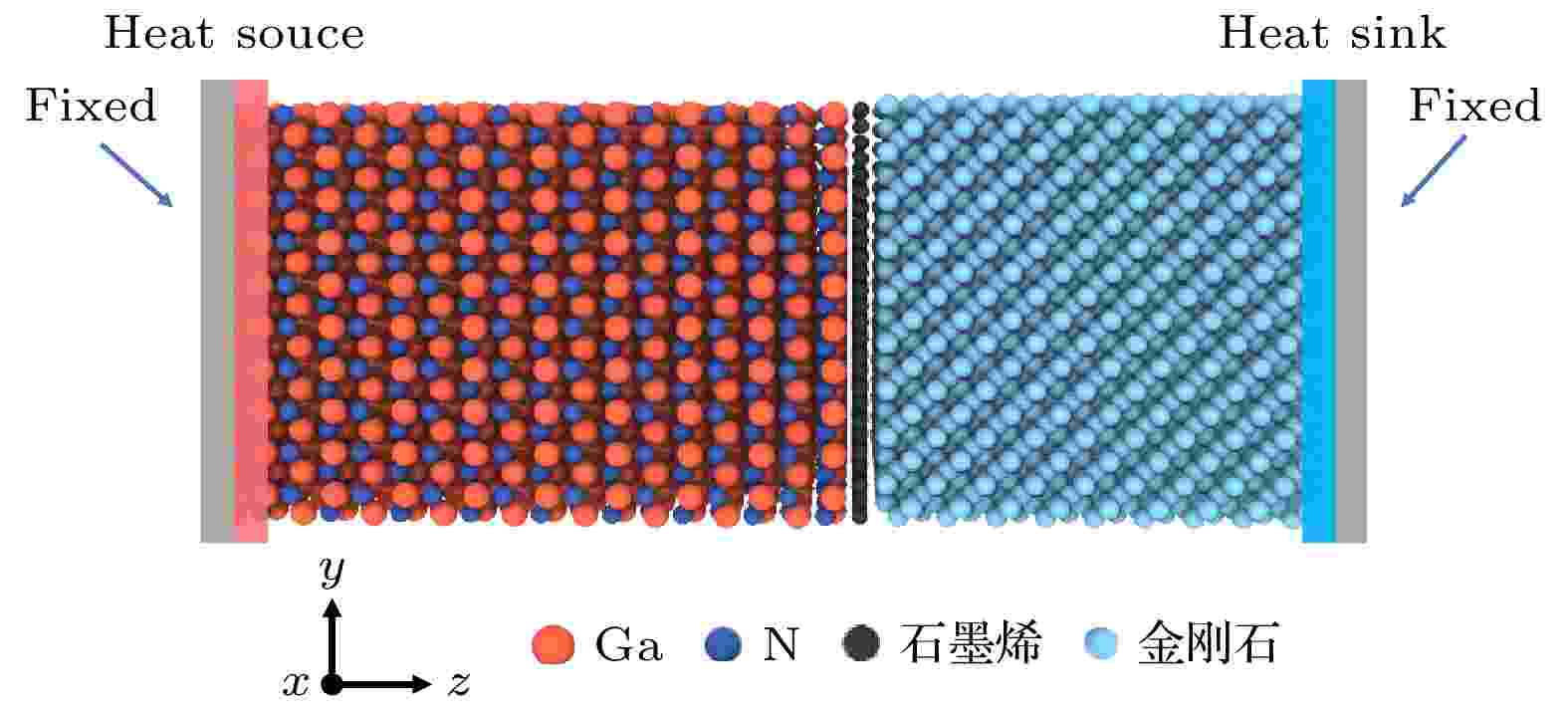
GENERAL
2024, 73 (15): 150202.
doi:10.7498/aps.73.20240515
Abstract +
VIEWS AND PERSPECTIVES
2024, 73 (15): 150301.
doi:10.7498/aps.73.20240917
Abstract +
Recent studies have found that all three materials within the vanadium-based Kagome superconductors (AV3Sb5,A= K, Cs, Rb) exhibit time-reversal symmetry-breaking behaviors in the superconducting states. Among the three, the Josephson junctions structured Nb/K1–xV3Sb5/Nb and RbV3Sb5show magnetic hysteresis below the superconducting transition temperature. In CsV3Sb5, there exists a zero-field superconducting diode effect, meaning the magnitude of the positive and negative superconducting critical current are different. We first discuss the similarities and differences among the three above-mentioned experiments. Then, we discuss the possible mechanisms responsible for the unconventional superconducting transport phenomena: such as chiral superconducting order parameter (d+id or p+ip), and chiral pair density waves arising from the coupling of the charge density waves and conventional superconducting states.
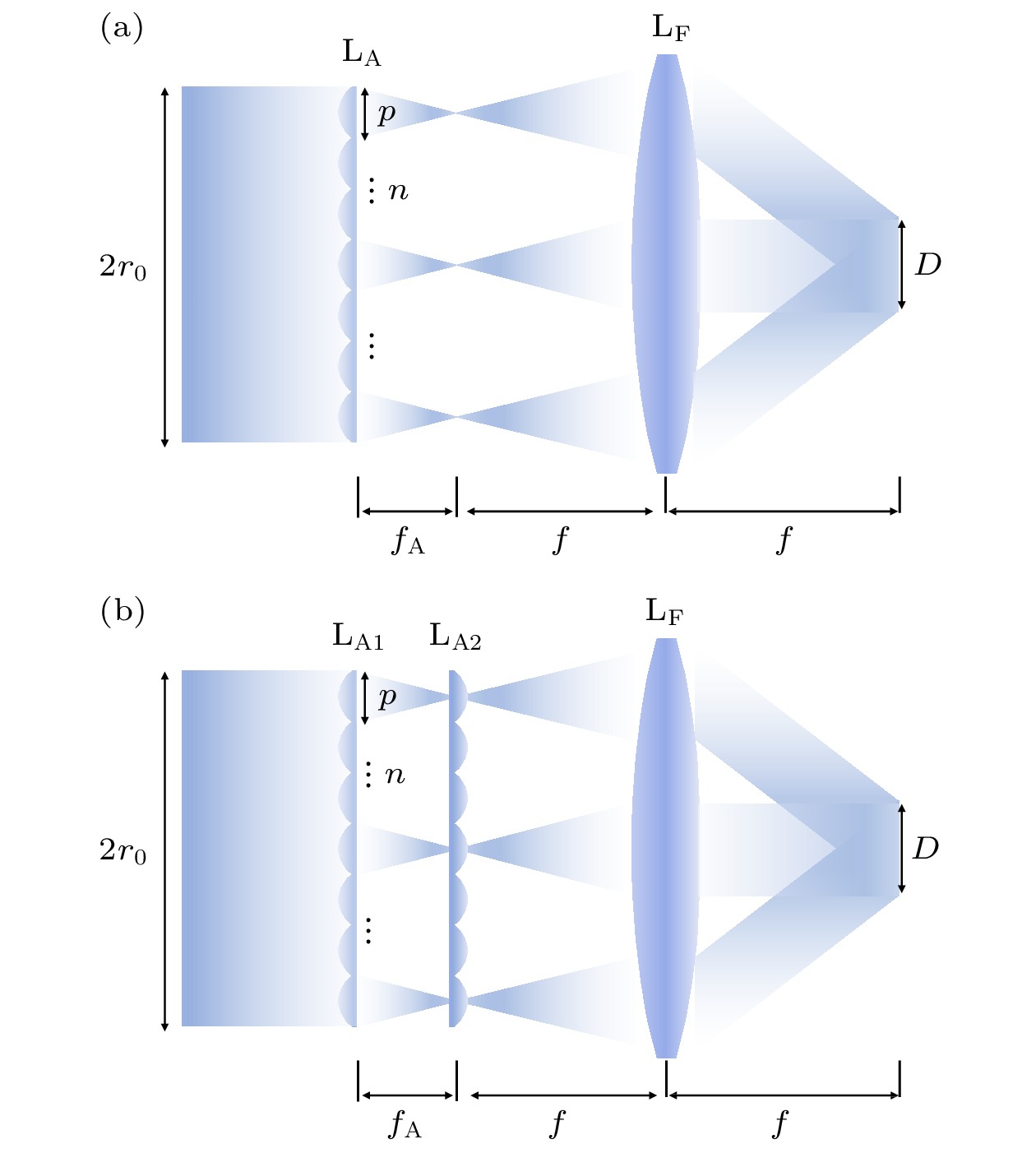
ELECTROMAGNETISM, OPTICS, ACOUSTICS, HEAT TRANSFER, CLASSICAL MECHANICS, AND FLUID DYNAMICS
2024, 73 (15): 154101.
doi:10.7498/aps.73.20240644
Abstract +
When using a fly’s eye lens system to homogenize highly coherent light sources, the interference effect between the sub-beams can cause a periodic speckle distribution of illumination intensity, thereby disrupting illumination uniformity. It has been shown that using a rotating optical phase-shift plate behind the fly’s eye lens can eliminate interference patterns, but it only demonstrates engineering realizations. And the theoretical analysis and technical guidance on the phase modulation method and statistical averaging method for fly’s eye lens homogenization systems are still lacking. In this work, a simulation model of fly’s eye random phase modulation homogenization system is developed and studied in detail. Each sub-beam of the fly’s eye lens is randomly phase-modulated to break the coherence condition, and the illumination intensity of multiple independent modulations is accumulated to eliminate the interference pattern. The more times the intensity is accumulated, the better the homogenization is. Meanwhile, studied in this paper are the influence of the diffraction effect on homogenization, and the influence of the sub-lens size and focal length on the homogenization, which result in the diffracting-type system and the imaging-type system respectively. For an imaging type system, it is necessary to ensure that the first fly’s eye lens is in the front focal plane of the second fly’s eye lens. By optimizing the parameters of the fly’s eye lens and using an imaging-type system withp= 1.8 mm andfA= 9 mm, a Gaussian beam with the non-uniformity of 117% is homogenized into a flat-topped beam with the non-uniformity of 1.2% in a square illumination area of 100 mm2. This fly’s eye lens random phase modulation homogenization system has a simple structure, low energy loss, and good illumination uniformity, and can be used in systems that require high coherent laser input and high resolution. This technology can be used in the field of deep-ultraviolet mask defect detection.
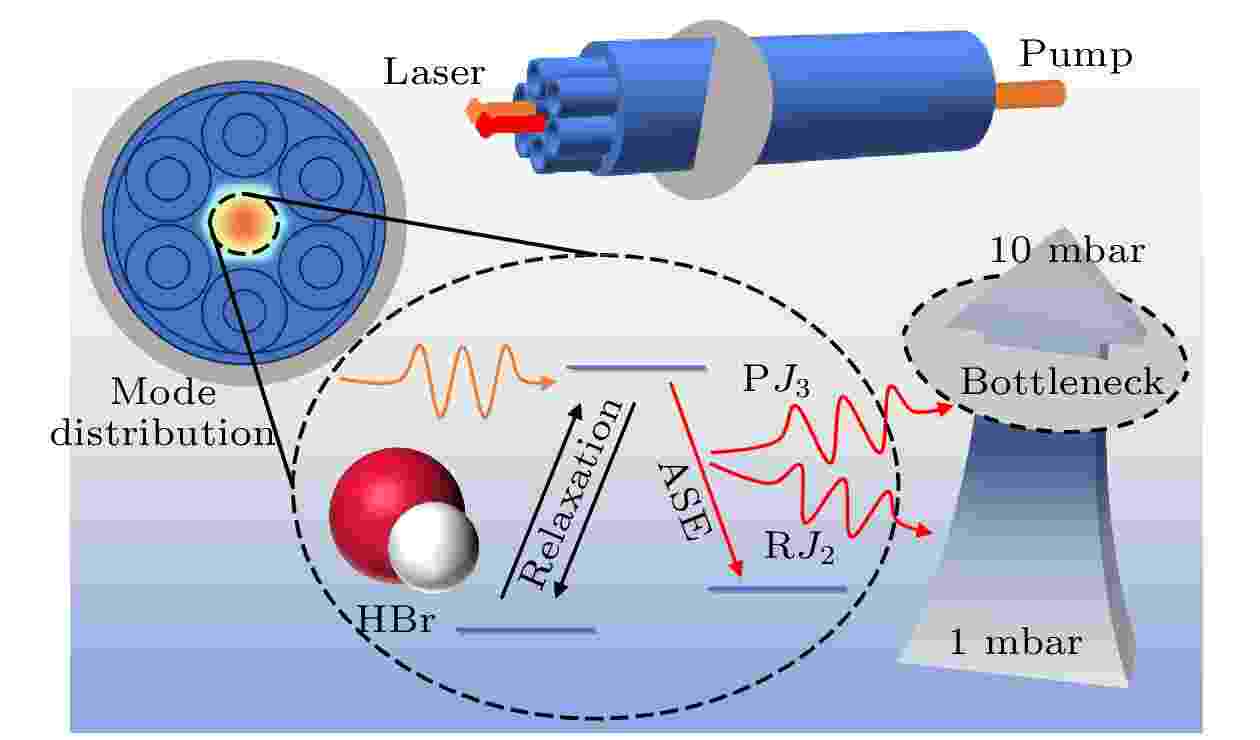
ELECTROMAGNETISM, OPTICS, ACOUSTICS, HEAT TRANSFER, CLASSICAL MECHANICS, AND FLUID DYNAMICS
2024, 73 (15): 154201.
doi:10.7498/aps.73.20240428
Abstract +
The hollow-core fiber gas laser (HCFGL) has developed into a significant mid-infrared laser source, but the development of theoretical model still lags behind experimental progress. In this work, we propose a multi-level vibrational thermal pool (VTP) model of HBr-filled HCFs, which comprehensively considers the rovibrational relaxation effects on laser gain in reasonable approximations of transition coefficients, and studies the laser characteristics on multi-line lasing, bottleneck effect, line competition, etc. The VTP model shows more precise results of laser slope efficiency, and threshold than previous models while fitting the experimental data very well, and successfully predicts an output bottleneck at 1 W pump. The P-branch laser is relatively advantageous over the R-branch laser for its larger Einstein
$A$
coefficient and emission cross section, and the seed injection can intensify the line competition and reach the highest P4 power proportion of 80%. The VTP model reveals that the output of various pump lines has a pattern similar to the Boltzmann distribution, suggesting that the distribution of ground rotational levels limits the laser gain of pump lines. Moreover, we discuss the photon leakage in high-energy pulsed pumping conditions. With the introduction of the leaking coefficient, this model shows relaxation oscillations and laser slope efficiencies close to experimental values and greater than the results in the CW condition, and solves the overpump problem in pulsed pump simulation. Finally, we confirm that the photon leakage is intensified at high repetition rate and the leaking coefficient should relate to the pulse repetition rate. This work develops a comprehensive modeling method for MIR laser simulation and this model is also applicable to various gas-filled HCFGLs.
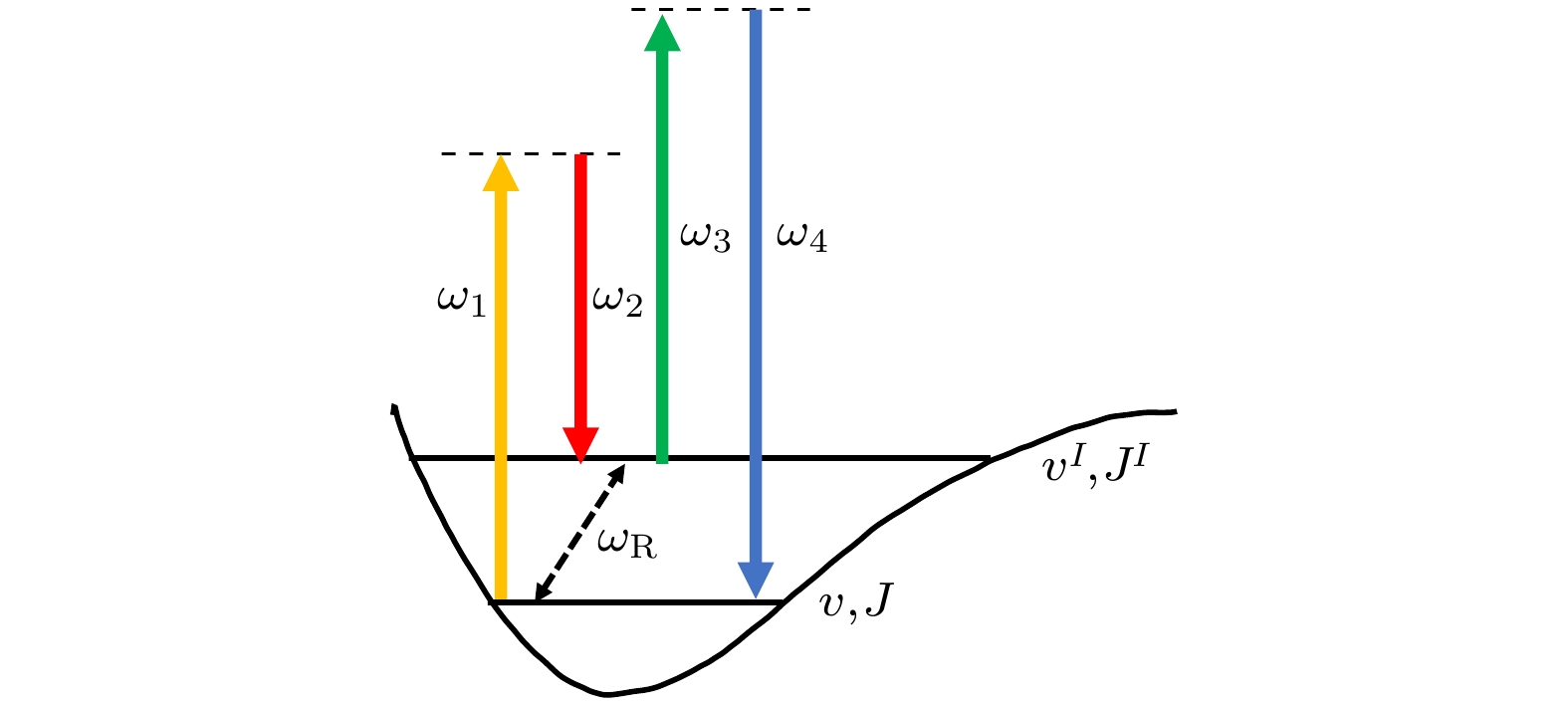
ELECTROMAGNETISM, OPTICS, ACOUSTICS, HEAT TRANSFER, CLASSICAL MECHANICS, AND FLUID DYNAMICS
2024, 73 (15): 154202.
doi:10.7498/aps.73.20240455
Abstract +
How to characterize thermodynamic non-equilibrium characteristics of flow field accurately and reliably is the key to solving the thermal and chemical non-equilibrium problem, which is one of the most basic scientific problems in hypersonic aerodynamcis. Based on the principles of coherent anti-Stokes Raman scattering (CARS) and modified exponential gap (MEG) Raman linewidth model, a CARS spectral computation and vib-rotational temperature inversion program is proposed for characterizing the thermodynamic non-equilibrium properties of high-temperature gas flow field. The influence of vibrational temperature and rotational temperature on Raman linewidth and CARS spectral characteristics are studied theoretically. A CARS system is built and the corresponding accuracy in a wide temperature range is verified in a static environment that is established by using a high-temperature tube furnace and a McKenna burner. The results show that the average relative deviation of the vibration temperatureTvand rotational temperatureTrfrom the equilibrium temperatureTeqare 4.28% and 3.34% respectively in a range of 1000 to 2300 K, and the corresponding average repeatability is 1.95% and 3.03% respectively. These results indicate that the vibrational temperature and rotational temperature obtained by the non-equilibrium program are in good agreement with those obtained from the thermal equilibrium program. Finally, a non-equilibrium microwave plasma flow is built and its vibrational temperature and rotational temperature are obtained by using the developed program. The results show that the microwave plasma is in thermodynamic non-equilibrium, and the vibrational temperature and rotational temperature are proportional to microwave power, while the thermodynamic non-equilibrium degree exhibits an opposite trend. With microwave power increasing from 80 to 180 W, the vibrational temperature of plasma increases from (2201 ± 43) K to (2452 ± 56) K, the rotational temperature increases from (382 ± 20) K to (535 ± 49) K, for which the principal reasons are that the increase in microwave power leads to an increase in electron number density, and neutral particles obtain energy through collision with electrons, resulting in the increase of vibrational temperature, rotational temperature, and translational temperature. The thermodynamic non-equilibrium degree decreases from 0.83 to 0.78 with the microwave power increasing, which is due to the V-T relaxation rate increasing. The molecules in the excited vibrational states lose energy through collision with ground state molecules (i.e. V-T relaxation process), leading the vibrational energy to be converted into translational energy. For N2molecules, the V-T relaxation rate is directly proportional to the temperature, which causes the difference between vibrational temperature and rotational temperature to decrease with microwave power increasing, and non-equilibrium degree to decrease with microwave power increasing as well.
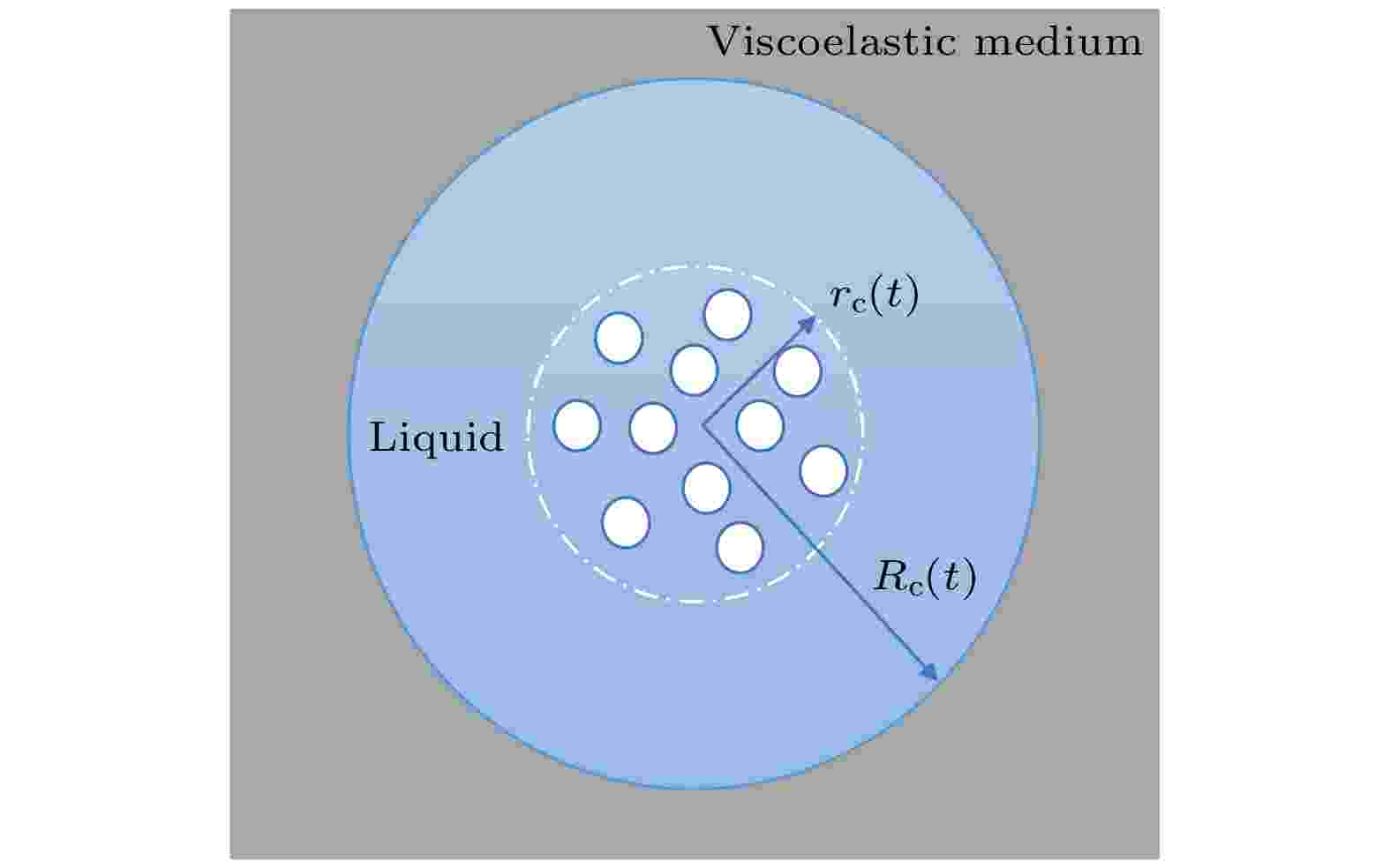
ELECTROMAGNETISM, OPTICS, ACOUSTICS, HEAT TRANSFER, CLASSICAL MECHANICS, AND FLUID DYNAMICS
2024, 73 (15): 154301.
doi:10.7498/aps.73.20240606
Abstract +
Considering the interactions between bubbles in a multi-bubble system in a liquid micro-cavity, a spherical bubble cluster in a liquid cavity is modeled in order to describe the dynamical effect of the viscoelastic medium outside the liquid cavity on the oscillation of bubbles, and the coupled equations of bubbles are obtained. Subsequently, the acoustic response characteristics of bubbles are investigated by analyzing the radial oscillation, the stability of the non-spherical shape of bubbles and the threshold of inertial cavitation. The results show that the confinement of the cavity and the bubble cluster facilitates the suppression of bubble oscillation, however, it might enhance the nonlinear properties of bubbles to a certain extent. From the acoustic response curve at 1 MHz, it is found that the main resonance peaks shift leftward with the increase of the bubble number, which means a minor resonant radius can be obtained. The nonlinear stability of bubbles in a confined environment is mainly determined by acoustic pressure amplitude and frequency, the initial bubble radius, and bubble number density, while the effect of the cavity radius is enhanced with the increase of the driving pressure. There is a minimum unstable driving acoustic pressure threshold, depending on the initial bubble radius, and the unstable regions are mainly located in a range of less than 4 μm. With the increase in bubble number density, the strip-type stable region scattered of the unstable region in the map is gradually transformed into a random patch-like distribution, which indicates that the bubble oscillation under high acoustic pressure is more sensitive to the parameters, and it is very susceptible to interference, produces unstable oscillation and then collapses. When the bubble equilibrium radius is in a range greater than 4 μm, the influences of frequency and bubble number density on the inertial thresholds are particularly significant.
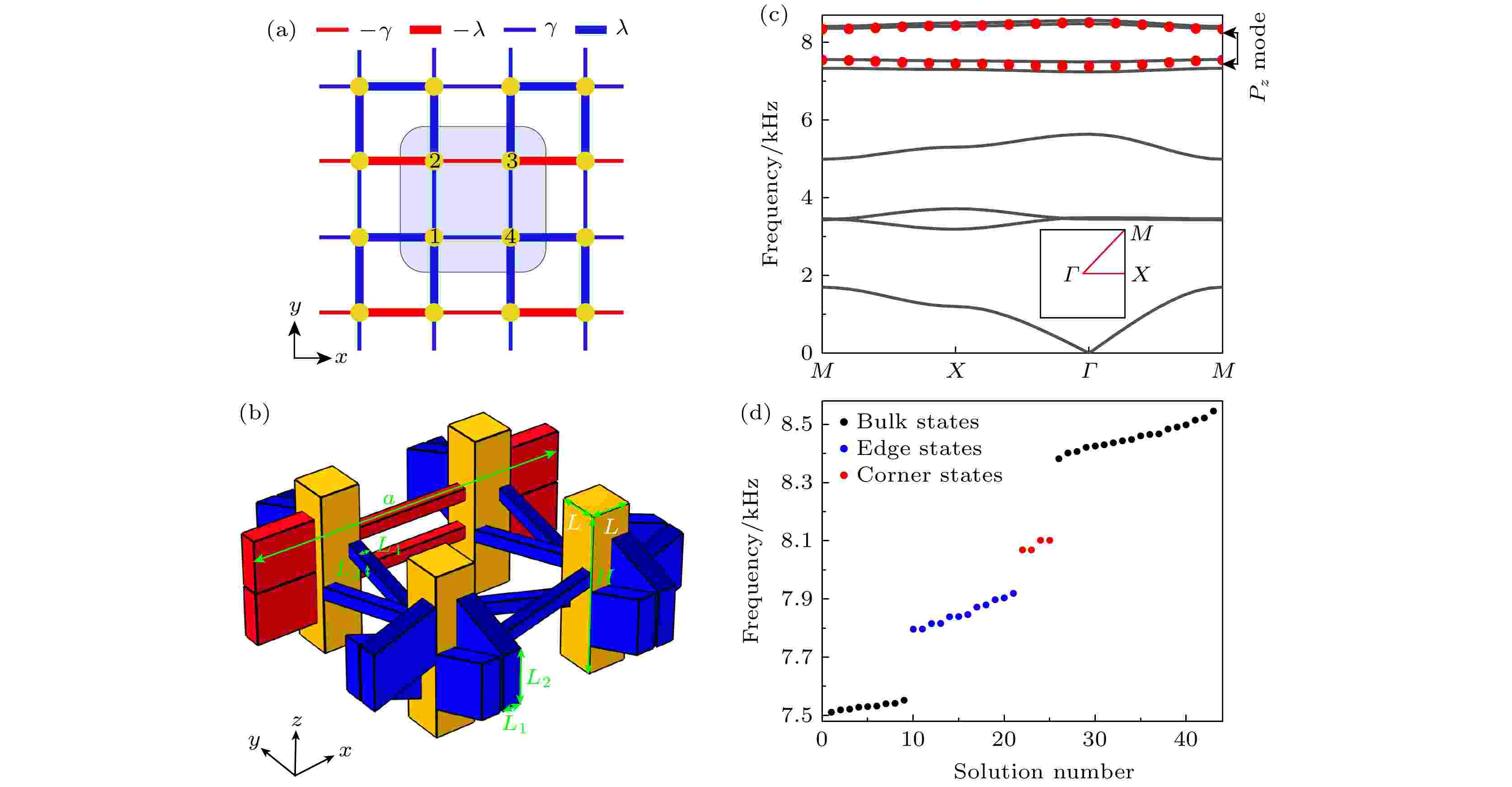
ELECTROMAGNETISM, OPTICS, ACOUSTICS, HEAT TRANSFER, CLASSICAL MECHANICS, AND FLUID DYNAMICS
2024, 73 (15): 154302.
doi:10.7498/aps.73.20240640
Abstract +
Quadrupole topological insulator (QTI) is the first proposed higher-order topological phase of matter with quantized quadrupole moment but zero dipole moment. The QTI has expanded widely the traditional bulk-boundary correspondence, thereby the lower-dimensional topological boundary state can be observed. The recent interest has turned to the bulk-dislocation correspondence, which dominates the topological states localized to disclinations, and links the reciprocal-space topology of lattices with the appearance of dislocation states. Recently, many research groups have turned the studies of dislocation defects to classical wave systems. In these researches, the method of inducing dislocation defects is to remove a portion of the lattices of topological insulator and then rearrange the remaining lattices of the topological insulator. Through such a method, the micro structure of the lattices is changed, but it is difficult to realize in the actual operation. In this work, we study the dislocation defect states in acoustic QTIs. The acoustic QTI is designed by reversing the magnitude of the intracellular and extracellular coupling in the system, and the bulk energy bands and topological corner states are studied. Subsequently, by introducing partial trivial lattices into acoustic QTI structure, the dislocation bound states are generated in the corner formed by two different topological phases, which can be characterized by a 1/2 quantized fractional charge. The robustness of the topological dislocation states is verified by introducing the imperfection inside the system. Further, it is demonstrated that the dislocation positions can be designed at will. Without changing the microstructure of the lattice, we successfully modulate the line dislocation states and bulk dislocation states. The topological dislocation states studied in this work broaden the types of higher-order topological states in artificial structures, and provide new insights into the acoustic applications of higher-order topological insulators, such as sensing and high-performance energy harvesting.
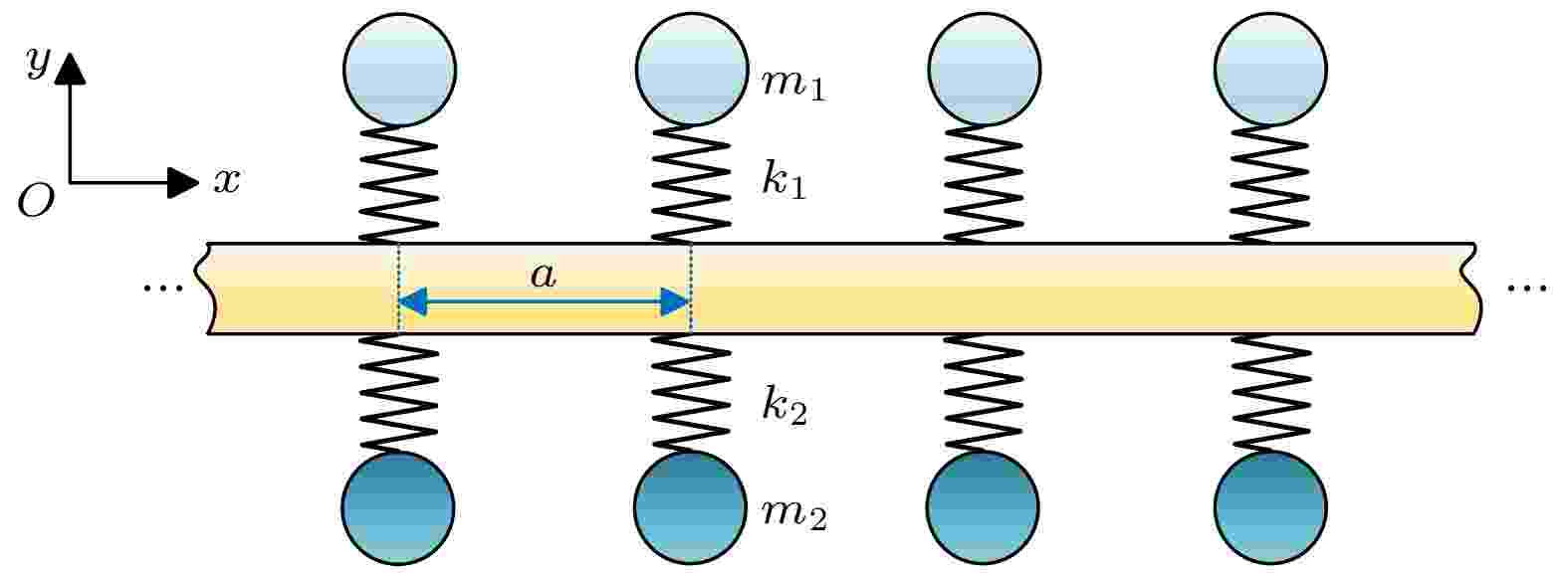
ELECTROMAGNETISM, OPTICS, ACOUSTICS, HEAT TRANSFER, CLASSICAL MECHANICS, AND FLUID DYNAMICS
2024, 73 (15): 154601.
doi:10.7498/aps.73.20240689
Abstract +

ELECTROMAGNETISM, OPTICS, ACOUSTICS, HEAT TRANSFER, CLASSICAL MECHANICS, AND FLUID DYNAMICS
2024, 73 (15): 154701.
doi:10.7498/aps.73.20240474
Abstract +
Bubble drag reduction technology is of great significance in improving the propulsion efficiency of underwater vehicle and reducing the comprehensive energy consumption during navigation. Bubble drag reduction is a highly effective method of reducing the frictional resistance encountered by large ships and underwater vehicles during navigation. It exhibits excellent stability in drag reduction, and has advantages such as environmental friendliness, adaptability to various flow environments, and suitability for all underwater components of ships. Therefore, it is greatly significant to conduct in-depth research on bubble drag reduction and its underlying mechanism. In this work, the flow characteristics and the boundary bubble drag reduction mechanism of gas-liquid Couette flow in parallel wall nanochannels are studied by molecular dynamics method, and the influences of surface wettability, wall roughness, and gas concentration on boundary slip velocity and bubble drag reduction effect are analyzed. The results indicate that the bubble drag reduction effect is enhanced with the increase of boundary slip velocity. In the gas-liquid two-phase flow region, with the increase of shear velocity, the lateral deformation of boundary adsorbed bubble and boundary slip velocity increase, thus enhancing the bubble drag reduction effect. The increase of solid-gas interaction strength and gas concentration can lead to the enrichment of gas atoms near the wall, improve the bubble spreading characteristics on the wall, and thus increase the slip velocity of the solid-liquid interface. The wall roughness can change the spreading characteristics of bubble, affect the boundary slip velocity, and then change the drag reduction effect of the fluid-solid interface. As the rib height increases, gas atoms accumulate in the grooves between ribs and the adsorption quantity of gas atoms on the upper surface of the rib decreases, which leads to the decrease of the boundary slip velocity of the solid-liquid interface and ultimately reduces the drag reduction effect. The research results will provide important theoretical guidance for implementing the boundary drag reduction technology in large ships and underwater vehicles.

- 1
- 2
- 3
- 4
- 5
- ...
- 13
- 14









